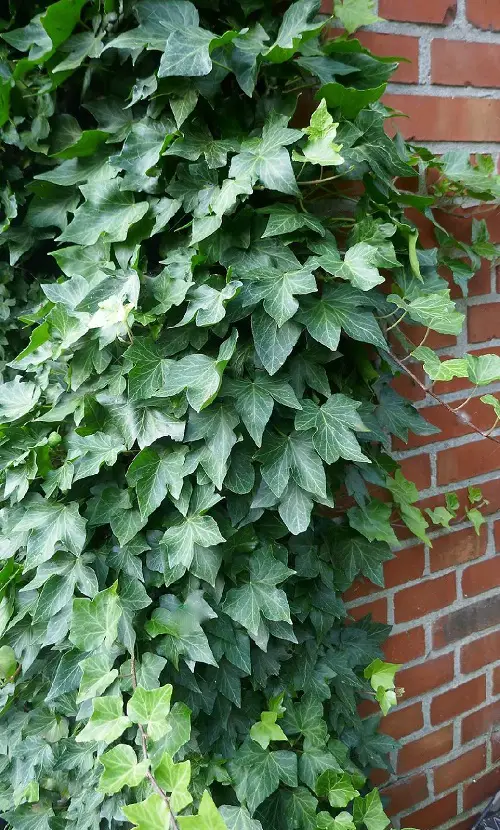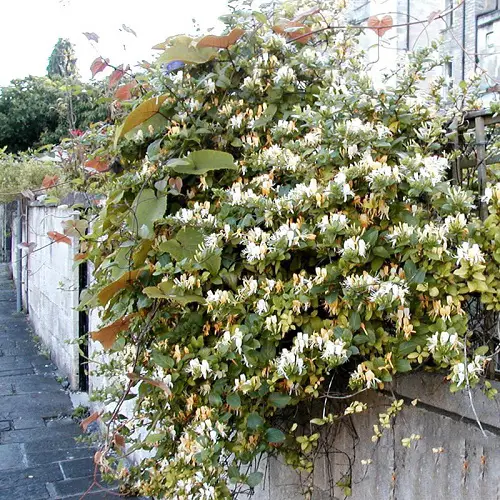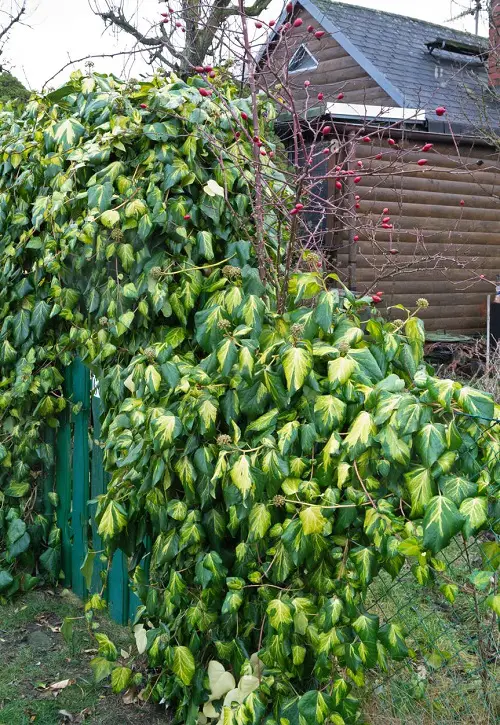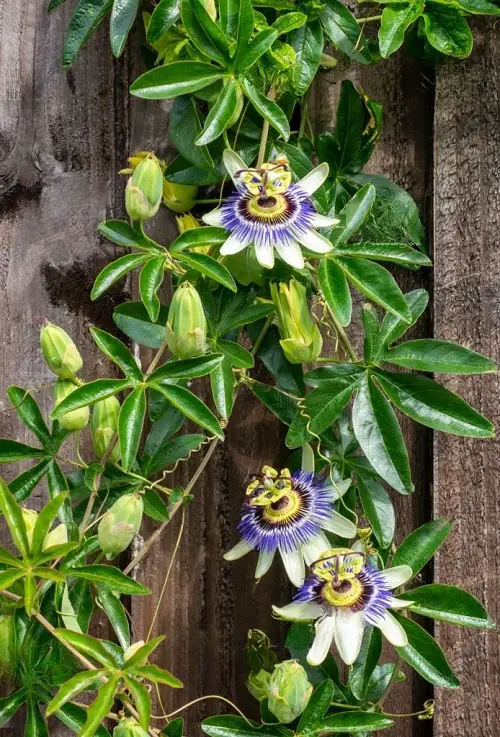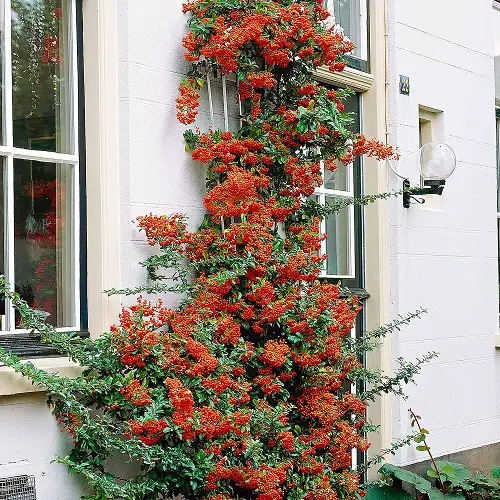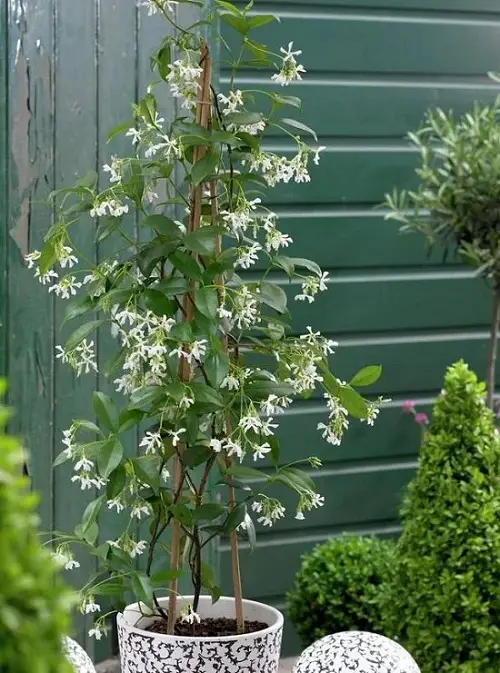Are you looking for the Best Evergreen Vines for Year-Round Interest? Check out our list for the perfect options.
Trailing plants are a great addition to any garden as they provide visual interest throughout the year. In this article, we’ll explore the Best Evergreen Vines for Year-Round Interest, including their characteristics, growing requirements, and unique features.
Here are the fastest-growing vines for fences and walls
Best Evergreen Vines for Year-Round Interest
1. Californian Lilac
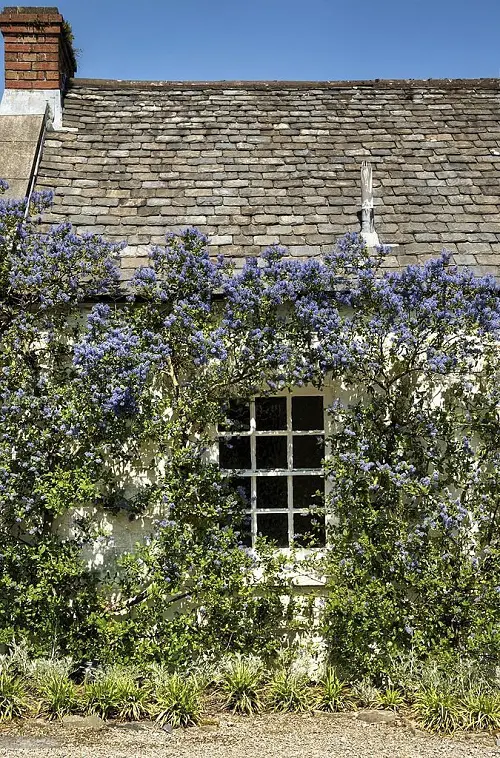
Botanical Name: Ceanothus
USDA Zones: 5-9
This bush can be cultivated to climb a sunny wall, which provides it with both shelter and safeguarding. Its woody branches produce numerous clusters of minuscule blue blossoms in early or late summer.
2. Chocolate Vine
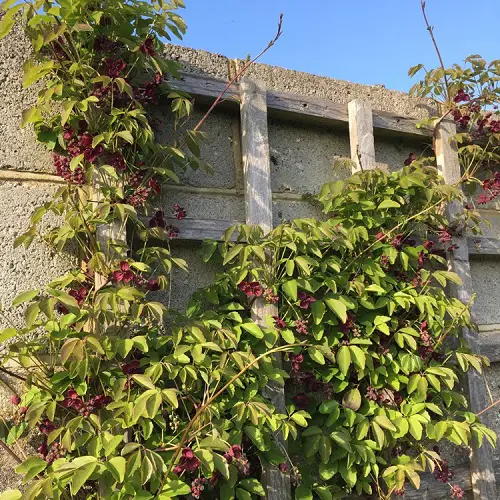
Botanical Name: Akebia quinata
USDA Zones: 4-9
This rapidly developing vine produces fragrant, dark maroon blooms reminiscent of chocolate during the summer, set against lovely light green leaves. It thrives in either full sun or partial shade, but in frigid regions, it requires protection.
3. Evergreen Clematis
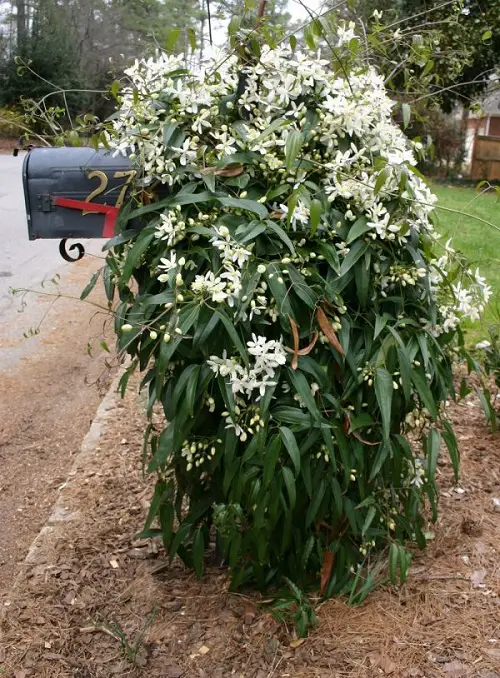
Botanical Name: Clematis armandii
USDA Zones: 7-11
This clematis, which blooms in the spring, produces substantial clusters of scented, white, or pink-tinged flowers that contrast beautifully with its sizable, sturdy, dark green leaves.
4. Winter Flowering Clematis

Botanical Name: Clematis cirrhosa
USDA Zones: 3-9
Not only are winter-flowering clematis evergreen, but they also bloom during the winter season. Two particularly charming varieties are ‘Early Sensation’ and ‘Winter Beauty,’ which feature delicate, cream or white bell-shaped flowers set against fern-like leaves.
5. English Ivy
Botanical Name: Hedera helix
USDA Zones: 4-12
English ivy is a woody vine that is also considered an evergreen perennial. It produces small greenish flowers; however, its primary appeal lies in its evergreen leaves, making it a popular foliage plant.
6. Evergreen Hydrangea

Botanical Name: Hydrangea seemanii
USDA Zones: 7-10
The climbing hydrangea vine boasts thick, rounded leaves that resemble those of an evergreen magnolia rather than a typical hydrangea. These sizable leaves create a striking contrast against the plant’s creamy blooms.
7. Silk Tassel Bush
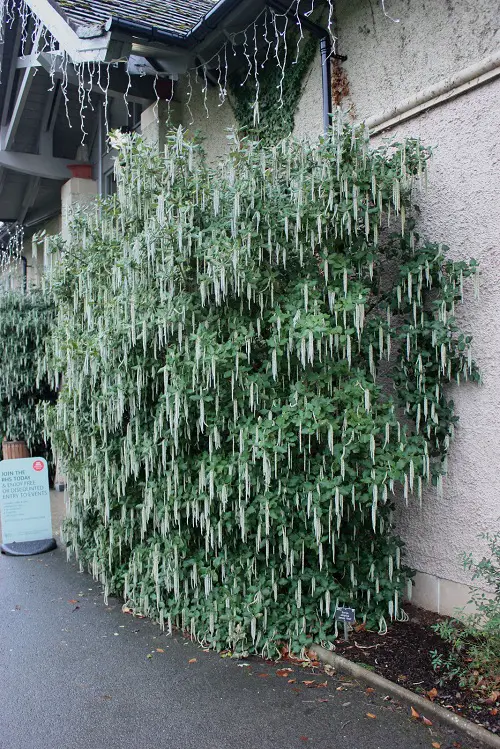
Botanical Name: Garrya elliptica
USDA Zones: 6-10
In addition to its evergreen foliage, the silk tassel bush produces striking silver catkins throughout the winter. As a wall shrub, it thrives in partially shaded or shaded areas and requires guidance to grow and attach closely to its support.
8. Henry’s Honeysuckle

Botanical Name: Lonicera henryi
USDA Zones: 7 and above
Henry’s honeysuckle displays clusters of unfragrant yellow blooms amidst lengthy, dark green oval leaves that have a coppery-green hue when young. In frigid weather, it may remain partially evergreen.
9. Silver Queen Euonymus

Botanical Name: Euonymus ‘Silver Queen’
USDA Zones: 6-9
This self-clinging climber has a tidy, compact form and is cultivated for its appealing foliage. Its leathery evergreen leaves are beautifully variegated in bright white and green tones, making it an excellent choice for adding brightness to shady areas.
10. Japanese Honeysuckle
Botanical Name: Lonicera japonica
USDA Zones: 4-8
The Japanese honeysuckle is a robust, twiggy, and self-clinging climber that produces abundant, highly aromatic flowers in small clusters throughout the summer. Its rounded leaves are partially evergreen but may shed after a harsh winter.
Here are the Best Succulent Vines and Climbers
11. Persian Ivy
Botanical Name: Hedera colchica
USDA Zones: 5-10
The Persian ivy is a striking self-clinging climber that features impressively large, glossy, and lobed leaves that come in shades of white or lime green. On mature plants, greenish flowers may emerge in the autumn.
12. Maidenhair Vine
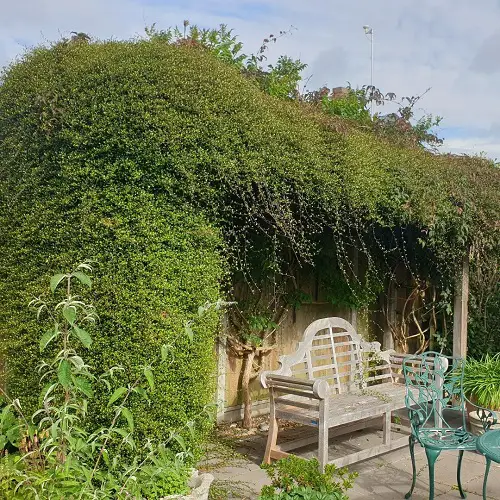
Botanical Name: Muehlenbeckia complexa
USDA Zones: 7-11
The Maidenhair vine, originating from New Zealand, is a unique foliage climber that creates a dense network of slender, wiry, and twining stems covered in petite, dark green leaves. For a more polished appearance, it can be pruned with shears.
13. Passionflower
Botanical Name: Passiflora caerulea
USDA Zones: 9-11
Admired for its robust growth, this plant features exceptionally large and uniquely shaped blue and white or pure white flowers contrasting beautifully against its dark green leaves, which may drop during harsh winters.
14. Firethorn
Botanical Name: Pyracantha
USDA Zones: 6-9
Pyracantha is a spiny shrub that can be encouraged to grow closely against a wire or trellis for support. With its small, oval green leaves, this plant offers visual appeal throughout the year. It produces clusters of white flowers during spring.
15. Climbing Hydrangea
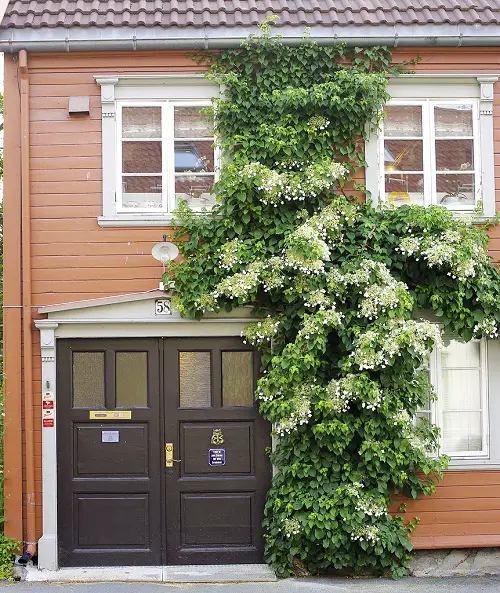
Botanical Name: Hydrangea petiolaris
USDA Zones: 7-10
This plant features self-clinging vines with bold, leathery green leaves that make it an ideal backdrop for its large white flowers that bloom in late summer and autumn. It can be grown in both sunny and shaded areas, but it should be protected from cold winds.
16. Potato Vine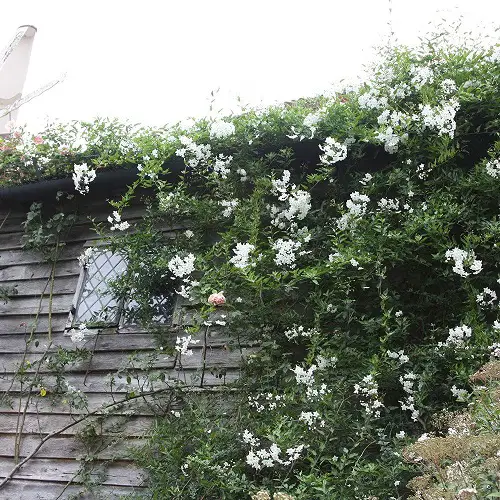
Botanical Name: Solanum laxum ‘Album’
USDA Zones: 9-11
The potato vine is a fast-growing flowering climber that thrives in sheltered locations. During the summer and autumn seasons, it produces an abundance of small white flowers with yellow centers in clusters.
17. Bluebell Creeper

Botanical Name: Sollya heterophylla
USDA Zones: 10-11
The Bluebell Creeper is a tidy and delicate flowering climber that thrives in a sunny and sheltered location or a region with mild temperatures. During the summer season, this plant produces slender stems bearing tiny, deep blue flowers.
18. Wall Germander
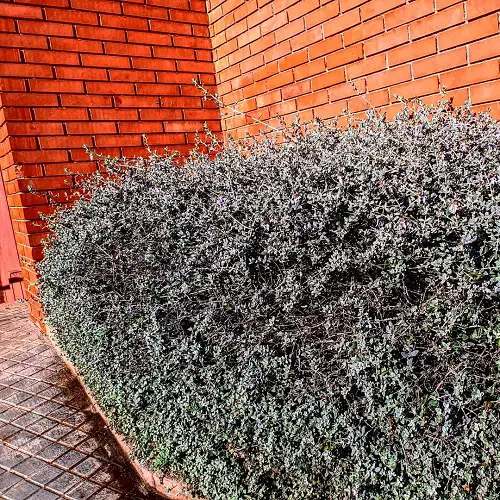
Botanical Name: Teucrium fruticans
USDA Zones: 8-10
For optimal growth, this shrub thrives in the shelter of a sunny wall. Its slender stems, adorned with silvery leaves, can be tied in to create a striking contrast against its blue summer flowers.
Check out some stunning small flowering vines for trellises
19. Star Jasmine
Botanical Name: Trachelospermum
USDA Zones: 8-10
Its evergreen foliage and moderate growth rate further contribute to its popularity. This plant can be grown in both full sun and partial shade but should be sheltered from strong winds. However, it may not be suitable for regions with very cold temperatures.
20. Japanese Staunton Vine

Botanical Name: Stauntonia hexaphylla
USDA Zones: 8-11
This unusual climber is a fast-growing plant that can quickly cover a sheltered wall with its vigorous twining stems. Its stems are adorned with oval dark green leaflets. During the spring season, it produces clusters of white and purple flowers.
21. Chilean Bellflower

Botanical Name: Lapageria rosea
USDA Zones: 9-11
During late summer and fall, the Chilean bellflower showcases large, waxy pink-red blooms that are truly captivating. For optimal growth, it requires moist, well-drained, and slightly acidic to neutralize the soil.
22. Garlic Creeper

Botanical Name: Mansoa alliacea
USDA Zones: 8-11
The foliage of the garlic creeper vine is a deep green with dark purple veins, and the blooms are a deep purplish-blue color. The blooms of the garlic creeper vine attract hummingbirds and butterflies, making it great for attracting pollinators.
23. Confederate Jasmine

Botanical Name: Trachelospermum jasminoides
USDA Zones:8-12
It is an evergreen vine with bright white flowers that bloom in the spring. It is a great choice for adding a fragrant, cascading touch to any landscape and can be used to cover a trellis, fence, or arbor or trained to climb up a wall or tree.
24. Skyblue Clustervine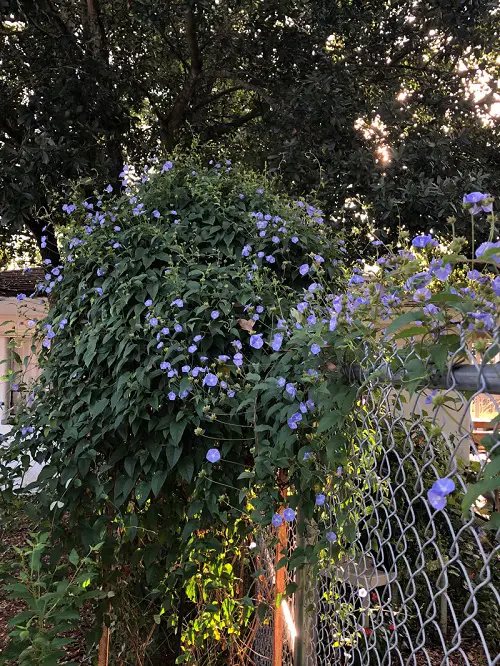
Botanical Name: Jacquemontia pentanthos
USDA Zones: 6-10
The Skyblue Clustervine plant is an ideal option for adding a splash of color to your home or garden. This plant grows in a spreading, cascading habit and is covered with clusters of small, trumpet-shaped lavender-blue flowers in the spring
25. Carolina Jessamine

Botanical Name: Gelsemium sempervirens
USDA Zones: 7-10
It is a fast-growing, evergreen vine that can climb and cascade over walls and fences. This plant prefers full sun to partial shade and moist, well-drained soil. It should be pruned regularly to maintain its shape and size.


